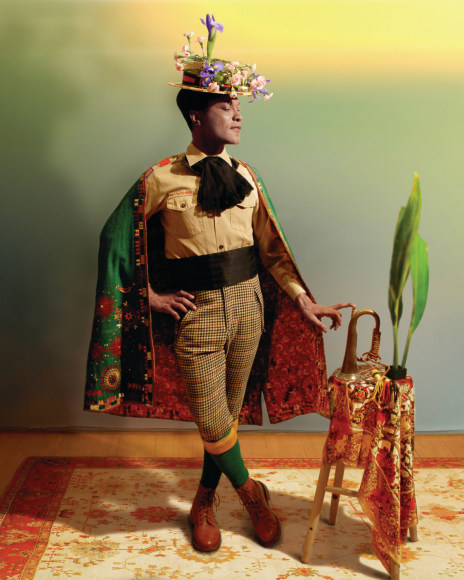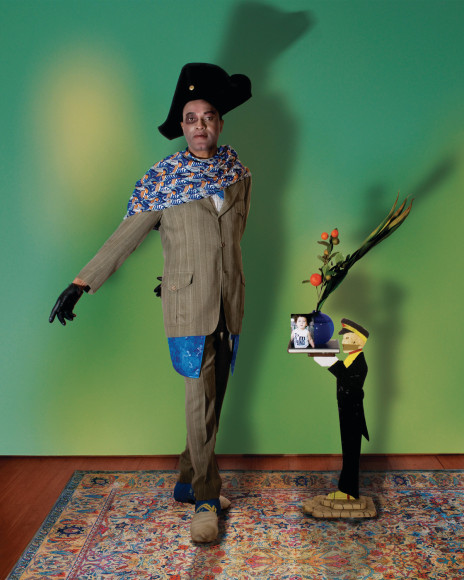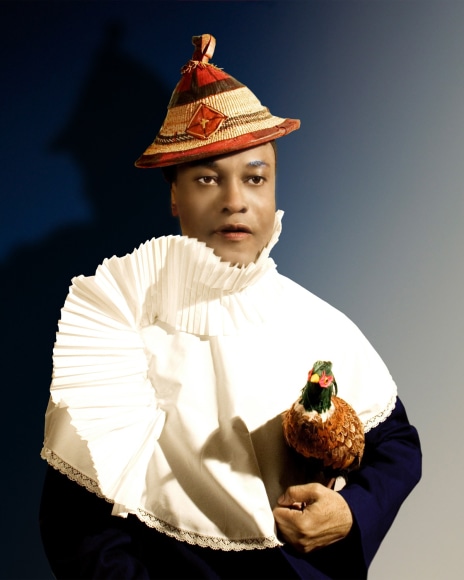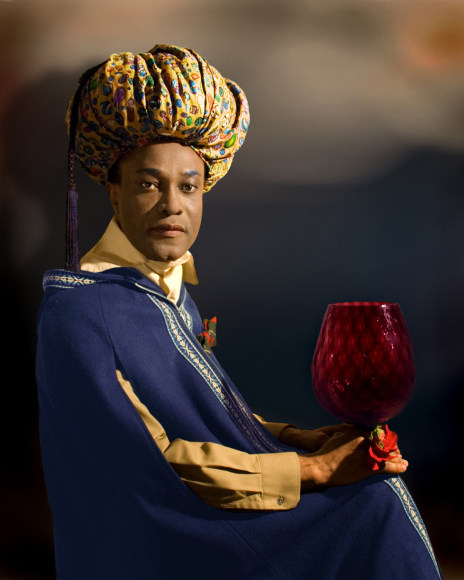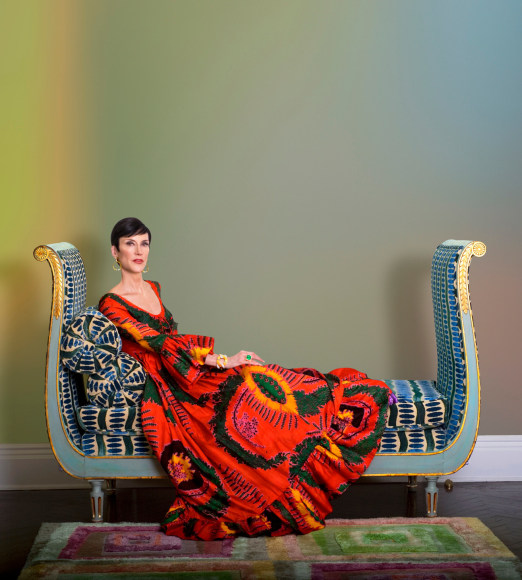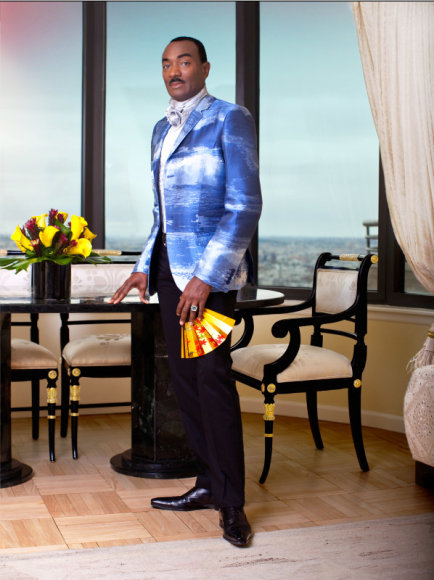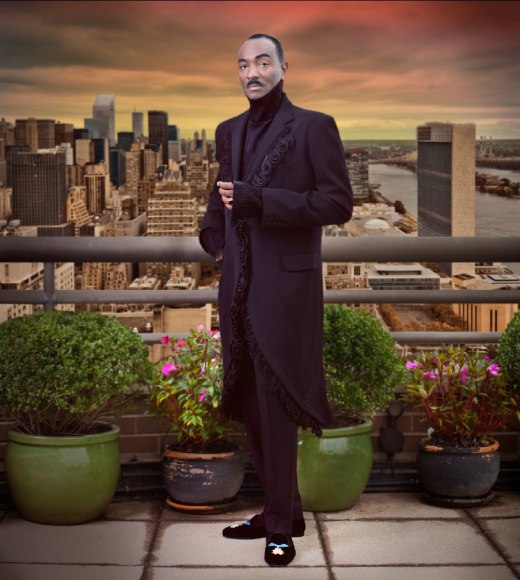Stux Gallery, New York is pleased to announce Iké Udé’s Self: Photographic Portraits and Sartorial Anarchy, an exhibition of new photographs by the New York based, Nigerian-born artist, Iké Udé.
Thomas Carlyle describes the dandy as “a clothes-wearing man, a man whose trade, office, and existence consists in the wearing of clothes. Every faculty of his soul, spirit, purse, and person is heroically consecrated to this one object, the wearing of clothes wisely and well.”
According to Iké, “Dandyism is also the significance of sartorial distinction enhanced by indeterminate delicacy of pose, gestures, tilt, determinate lines, or a thrust here-and-there, all harmonized by an agreeable countenance. Yet, it is precisely in isolating the various parts (as seen in his very own four self portraits on view) that we see the overall process and resultant composition of a dandiacal machine. The incongruous pairing of the familiar: (a straw boater garnished with flowers, football-socks, English-shoes, Boy Scout shirt), with relatively unfamiliar items (eighteenth- century neckwear, vintage wool-breeches, Afghani folk-coat) is where dandyism can be stoked, problematized, renewed and appreciated as a protean plastic art”.
Complementing Iké Udé’s very own Self Portraits are portraits of celebrities in their own right. These series of works expand on the notion of “Self.” Through Iké’s vision of self, these works continue in the tradition of portrait painting reaching back hundreds of years. Iké, however, brings to this tradition a post-modernist twist by appropriating items and motifs from various past and contemporary cultural styles, amalgamating them into his own distinctive aesthetic. The portraits extend Iké’s theme of Sartorial Anarchy in a somewhat more subdued manner, maintaining, nevertheless, refreshing, startling and unexpected syncopations. These images surprise and transport the viewer by letting them peer into an incredible charmed world of dandiacal imagination.
According to Udé, “to quote from all items of past or present men’s attire is the aim of sartorial anarchy. By mixing varied costumes in concert with the now and then, we begin to realize how arbitrary, subjective, fleeting, even absurd—no less wonderful—our “real” cultural construct is. Sartorial Anarchy demonstrates a debt to artifice while acknowledging an ongoing back-and-forth between culturally subjective ambiguities in men’s dress codes and its attendant beauty, flaws and contradictions.”

